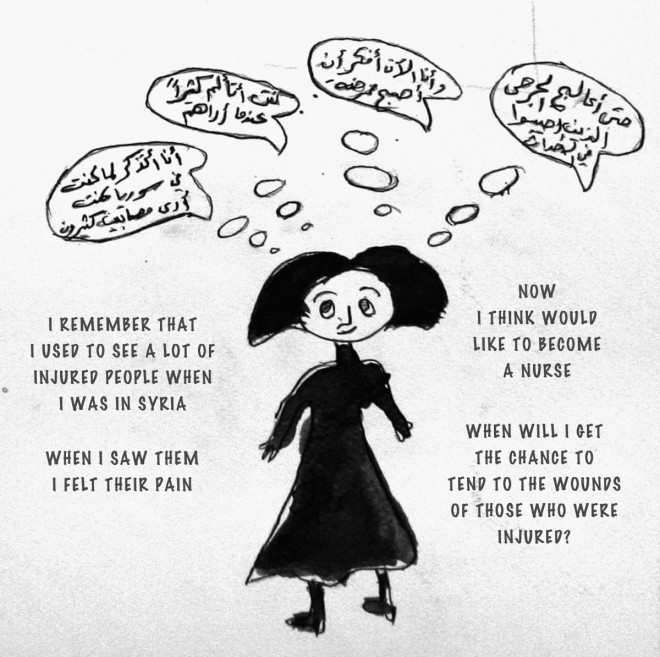 The population at Jordan’s Zaatari camp for Syrian refugees has dwindled. The United Nations Refugee Agency (UNHCR) counts current residents at 83,000, down from over 200,000 in April 2013. People are relocating to communities across Jordan, electing to return to Syria, or simply bailing out of the refugee program. Meanwhile, those that remain – many in their third year of residency – struggle for normalcy within the 1.3 square mile fenced compound. Come see how art is helping.
The population at Jordan’s Zaatari camp for Syrian refugees has dwindled. The United Nations Refugee Agency (UNHCR) counts current residents at 83,000, down from over 200,000 in April 2013. People are relocating to communities across Jordan, electing to return to Syria, or simply bailing out of the refugee program. Meanwhile, those that remain – many in their third year of residency – struggle for normalcy within the 1.3 square mile fenced compound. Come see how art is helping.
Canadian artist Jean Bradbury has strong ties to Jordan; she’s been working with a women’s craft collective in Ghor-al-Safi along the southern Dead Sea for over twenty years. (See our story about that craft guild and their unique products, here.) In 2012, when Syria exploded into civil war, Jean contacted the Canadian Embassy to see how she might use her art teaching abilities to help in the relief effort. So began her annual pilgrimage to Zaatari Camp, where – armed with unsinkable energy and donated art supplies – she holds week-long workshops for residents ranging from toddlers to teens.
Bradbury organized her last visit specifically to teach techniques for sharing stories in a graphic novel format. I was lucky enough to tag along as her paper-cutting, ink-pouring assistant.
The men and women who took part in her workshop were members of an all-male English language class and an all-female cosmetology class who took a break from study to try their hand at art. None was a professional artist, although one young man had been an art teacher in Damascus. Many were drawing with pen and ink for the first time.
After she explained the process of setting up page format (here, arranging story blocks right to left, as per Arabic writing), using time sequences to let a story unfold, and the need to add text or thought bubbles to supplement each scene, the group went silent as they dove into their drawings.
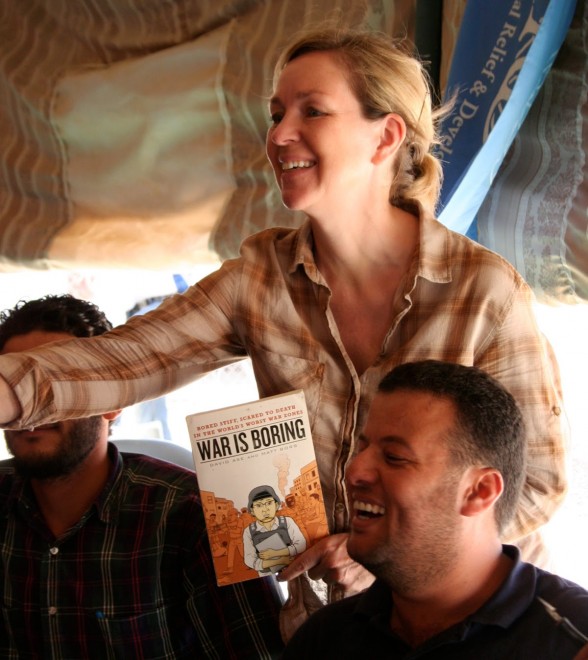
“I chose to teach young adults because they seem to be particularly under-served in the camp. Too old to take part in art programs for children and often at loose ends, at a time in their lives when they ought to be making their way in the world. Their frustration and despair is palpable,” said Bradbury, “I hope that, by giving them a creative voice, they will find solace, have some fun, and be able to direct their energy toward something positive and life-affirming.”
The artwork proved her point. She urged everyone to write and draw small moments from their daily lives in the camp – but deeper messages emerged. Once everyone got comfortable with the tools of the trade, their tales flooded reams of blank paper. The focus was intense. At times the tent where we gathered went silent, except for the noise of the power generator and the wind whipping against the fabric walls.
Translated from above: “I hope to return to our country soon. I wish I could have a child. Life is unbearable without plants and trees.”
Bradbury told Green Prophet, “I chose graphic novels because I wanted to give voice to some of the otherwise voiceless young people in Zaatari Camp. Using words with pictures enables the refugee to tell his or her story in a much clearer and more engaging way than if they were to use words or pictures alone. The stories that emerge are deeply personal and intimate. It’s therapeutic for the artist and incredibly moving for the reader.”
She took her idea to a donor in Seattle (where she lives and works) who agreed to pay for workshop supplies. He was particularly interested in providing a therapeutic activity for young men who – in their despair – might otherwise be drawn to violence.
She added, “Comics are suitable for situations where there are no art supplies, all that’s needed is a pencil or pen and a piece of paper. I took old-fashioned nib pens to the camp and taught the class how to make ink from pomegranate rinds and iron – anticipating that the donated art supplies would eventually run out.”
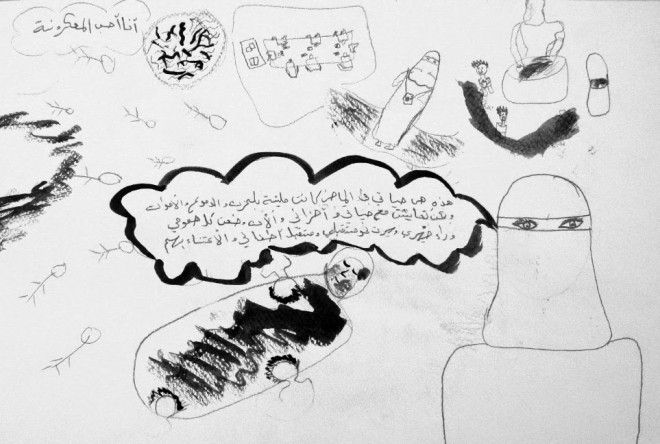
Translated from above: “My life in the past was filled with sadness, death and tears. But I moved on, and now all I want is to live in the future and take care of my children.”
Using a comic book format to tell a serious story became popularized in the mid-1960s. The genre rose to critical and commercial success in the 1980’s with publications such as Art Spiegelman’s MAUS which recounted his father’s experiences as a Polish Jew during World War II and the holocaust.
In 1996, Joe Sacco published Palestine, a graphic novel based on his several months of research in the early and an extended visit to the West Bank and Gaza Strip where he conducted over 100 interviews with both Palestinians and Jews in the 1990s.
His resulting two-volume set won an American Book Award that same year.
Iranian artist Marjane Satrapi told about coming of age during and after the Iranian revolution in Persepolis, a graphic novel published in four installments between 2000 and 2003. Named by Newsweek as fifth on their list of “10 best books of the decade”, it was adapted for film in 2007.
Perhaps one of these giants in the genre will tap the stories of Syria. The potency of the pictures made by these amateur artists guarantees a blockbuster.
Translated from above: “I feel sad because I know that a lot of kids and young people die daily in my country and I cannot do anything”
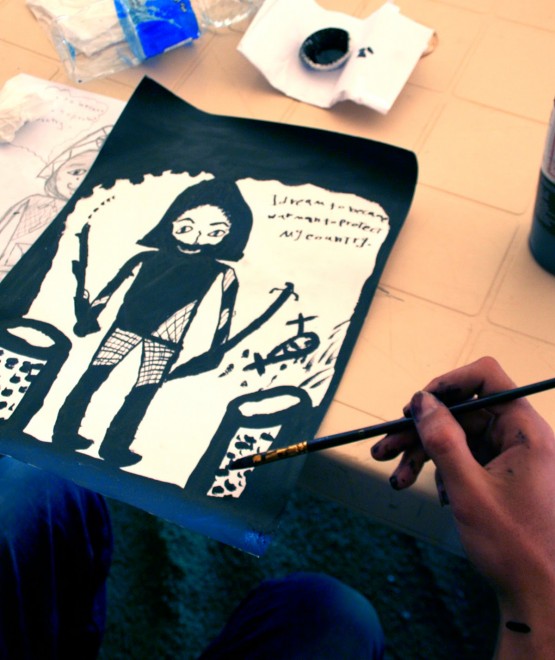 Translated from above: “I dream to be a war man to protect my country”. When we asked the artist who he wanted to fight against, he saidDaesh (local term for the IslamicState of Iraq and Syria, a/k/a, ISIS).
Translated from above: “I dream to be a war man to protect my country”. When we asked the artist who he wanted to fight against, he saidDaesh (local term for the IslamicState of Iraq and Syria, a/k/a, ISIS).
She plans to return to Zaatari Camp before summer to continue these workshops. With more instruction and time to explore story lines, the comics could be a safe and creative way to express grief – and a way to imagine a happier future.
Studio Syria always distributes enough supplies to enable workshop participants to go home and continue their artwork.
Want to be part of this beautiful initiative? Donate directly through her NGO Studio Syria – website link here. If you are in Jordan and able to provide art supplies, drop her an email. And – a nudge to professional graphic novelists – contact her directly if you’d like to take this project to the next level.
All images from Jean Bradbury and Laurie Balbo

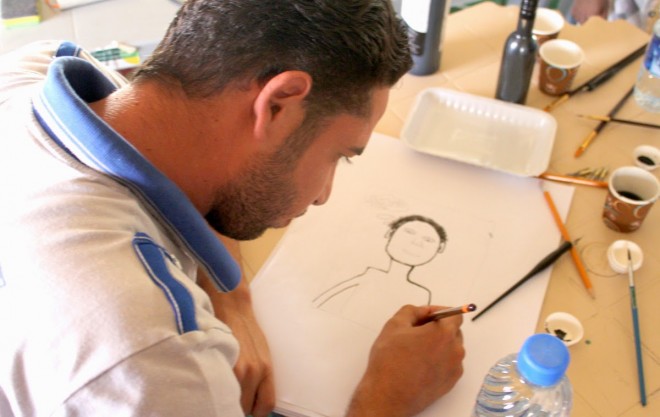
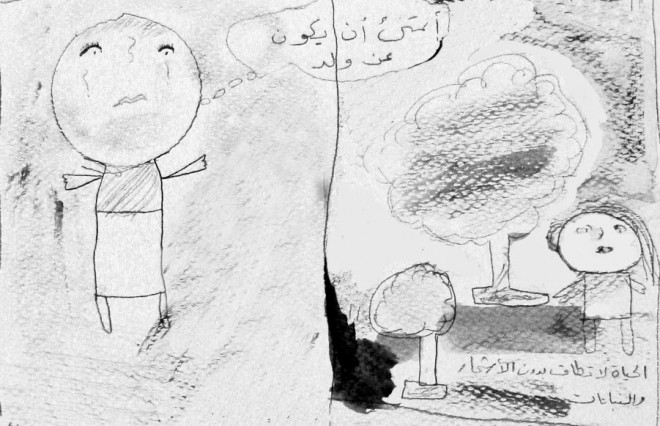
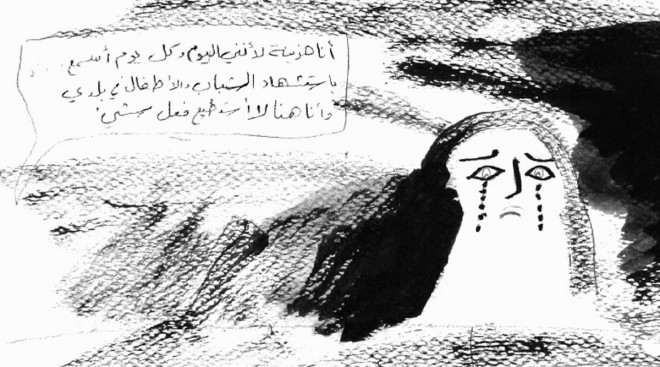
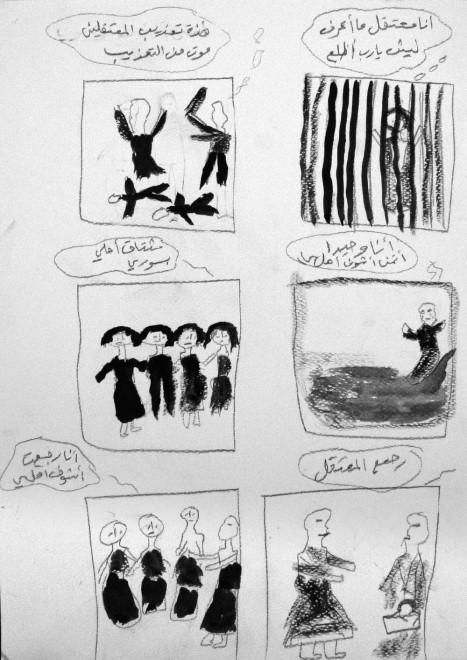
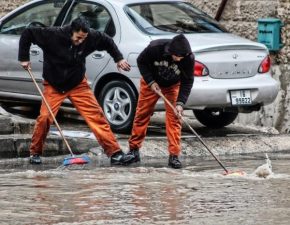
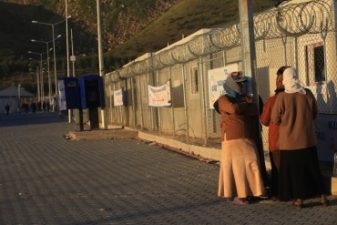
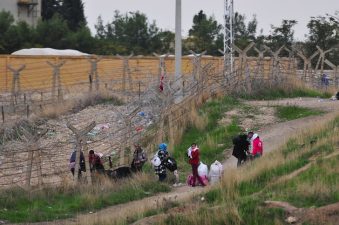
Comments are closed.